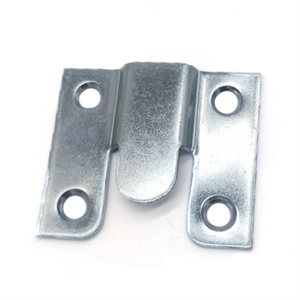Tempering Of Metal Stamping Parts
The tempering treatment of Metal Stamping Parts is an important heat treatment step used to improve the mechanical properties of materials, such as hardness, toughness, strength, and wear resistance. The following are some basic steps and considerations for tempering treatment of Metal Stamping Parts:
Clean the surface of the material: Before tempering, ensure that the surface of the Metal Stamping Parts is clean and free of oil and other pollutants. This helps to reduce the impact of surface defects and metallurgical reactions on material properties.
Determine tempering temperature: The selection of tempering temperature depends on the type of material used, the thickness of the material, the required mechanical properties, and processing requirements. Different materials have different tempering temperature ranges, so it is necessary to choose according to specific situations. Usually, the selection of tempering temperature requires comprehensive consideration of factors such as material hardness, toughness, and wear resistance.
Control tempering time: Tempering time is also an important factor affecting the performance of Metal Stamping Parts. The longer the tempering time, the higher the toughness and plasticity of the material, but the corresponding decrease in hardness. Therefore, it is necessary to choose the appropriate tempering time based on factors such as material size, shape, and hardness.
Control cooling rate: The cooling rate after tempering also has a significant impact on the microstructure and properties of the material. A slower cooling rate can make the material structure and properties more uniform, but it may also lead to defects such as deformation. A faster cooling rate can improve the hardness of materials, but the structure is not easy to adjust. Therefore, it is necessary to choose the appropriate cooling rate based on factors such as material type, composition, and requirements.
Quenching and tempering treatment: After tempering treatment, Metal Stamping Parts may exhibit various structural and performance differences. In order to achieve more uniform and stable performance, quenching and tempering may be necessary. The specific method of quenching and tempering depends on the type and requirements of the material.
Inspection and Testing: After completing the tempering treatment, Metal Stamping Parts need to be inspected and tested to ensure that they meet the required mechanical properties and dimensional requirements. This may include hardness testing, tensile testing, impact testing, etc.
The tempering treatment of Metal Stamping Parts is a complex and critical process step that requires comprehensive consideration of multiple factors to select appropriate treatment parameters. By reasonable tempering treatment, the mechanical properties of Metal Stamping Parts can be significantly improved, and their quality and reliability can be enhanced.
